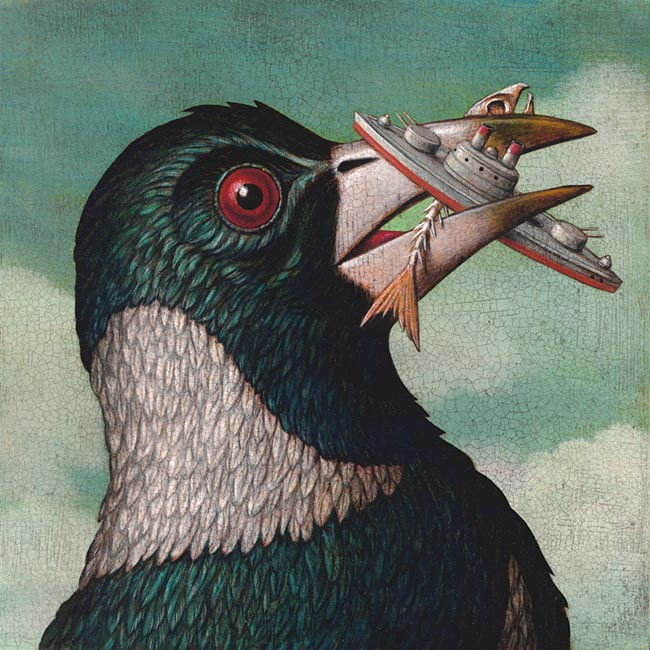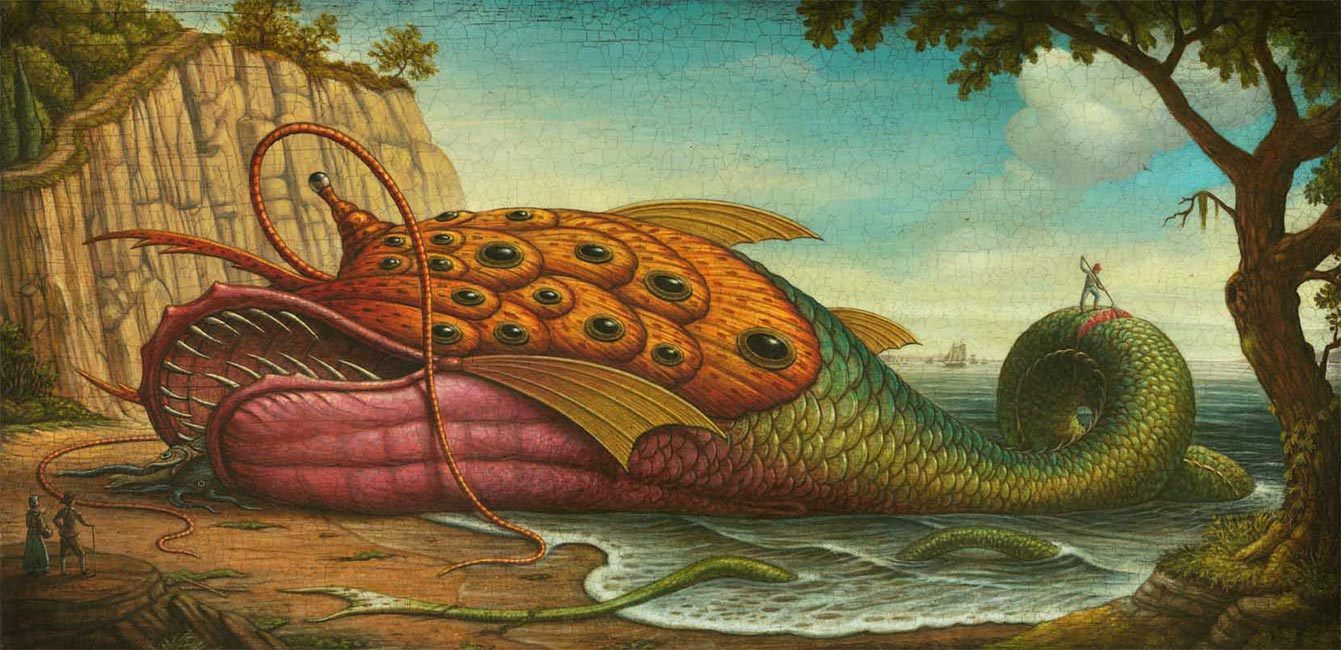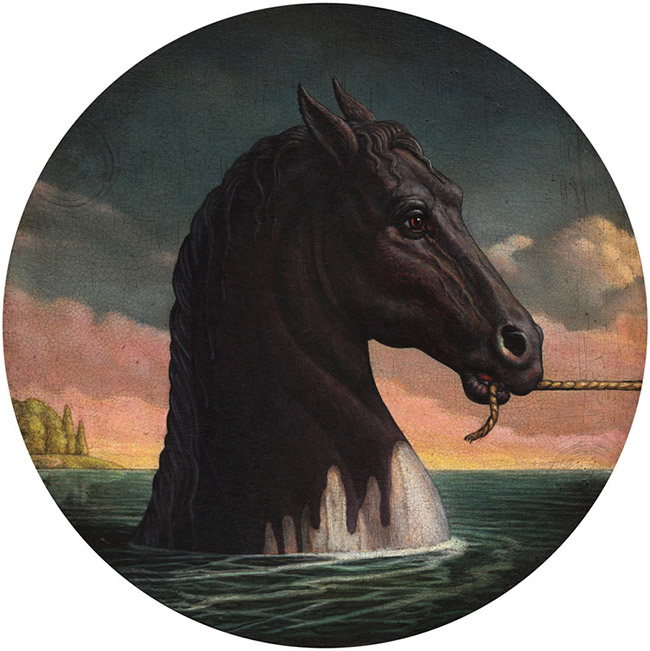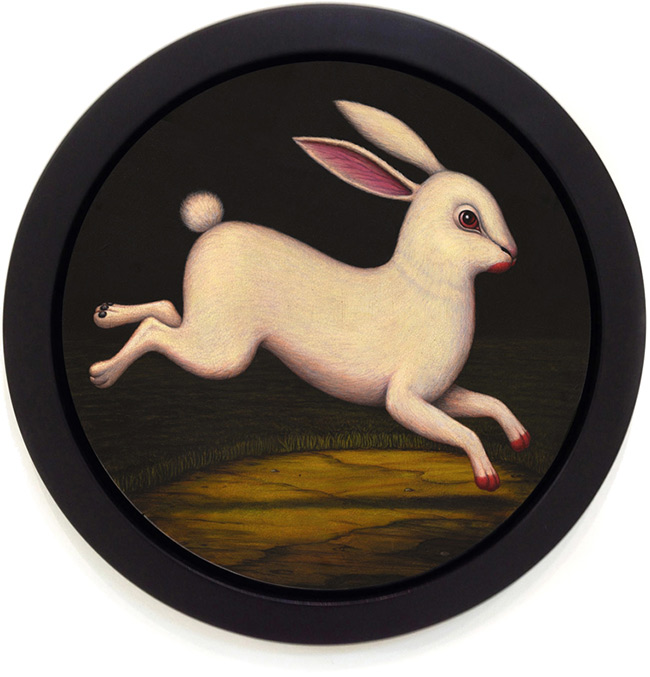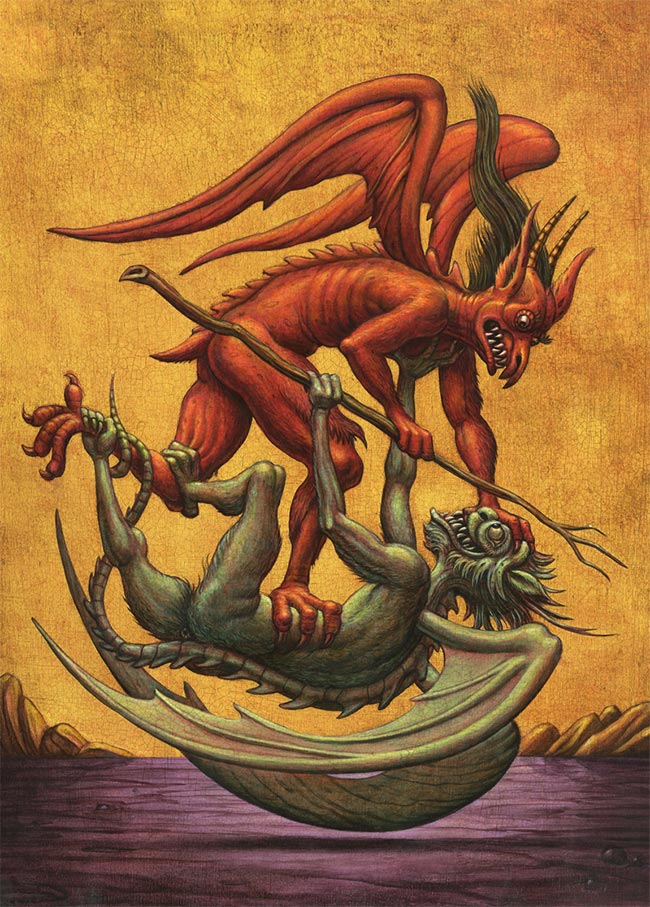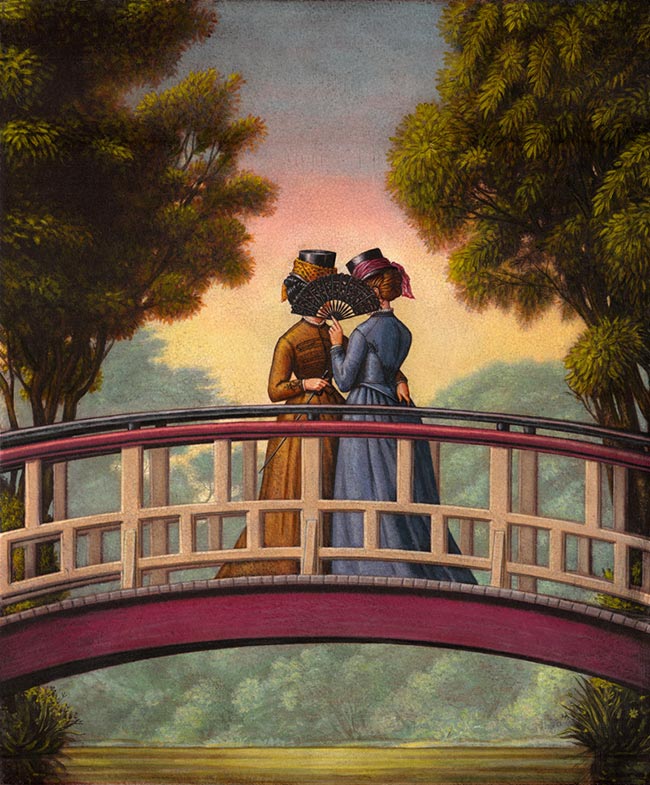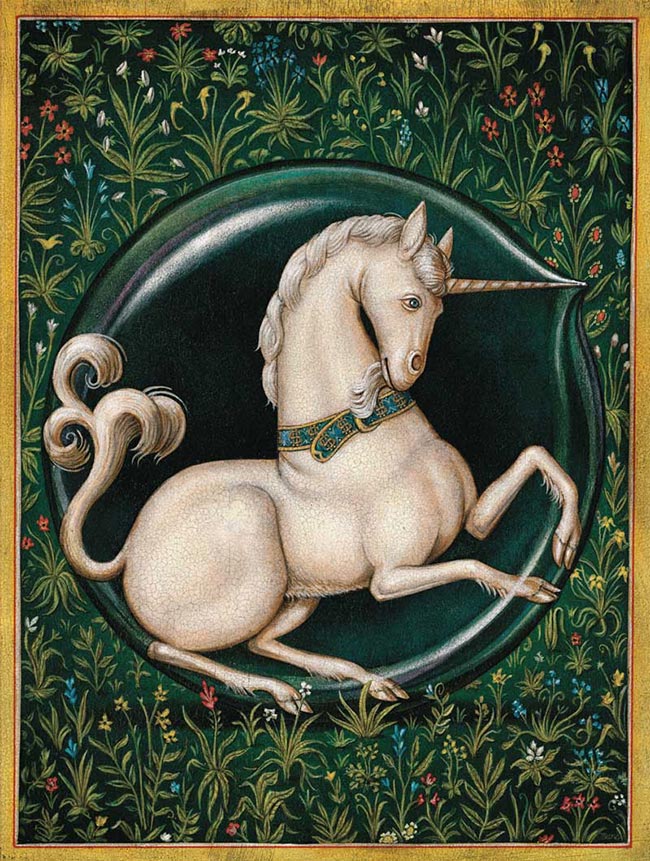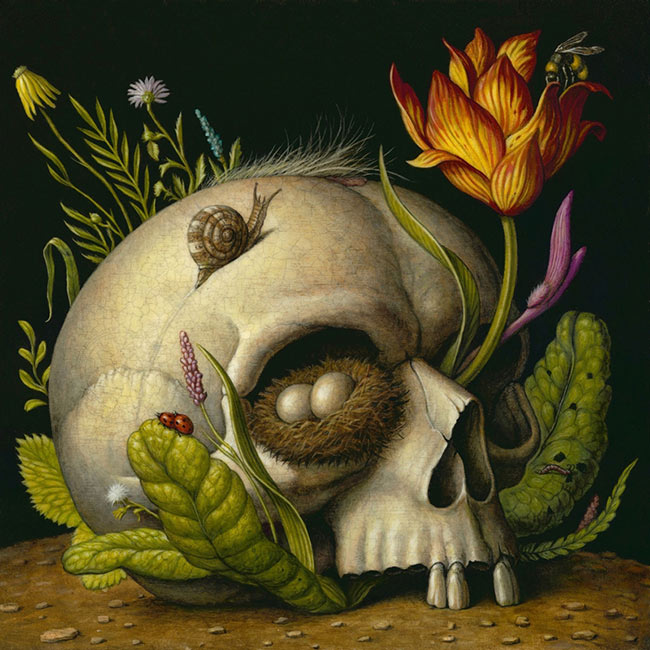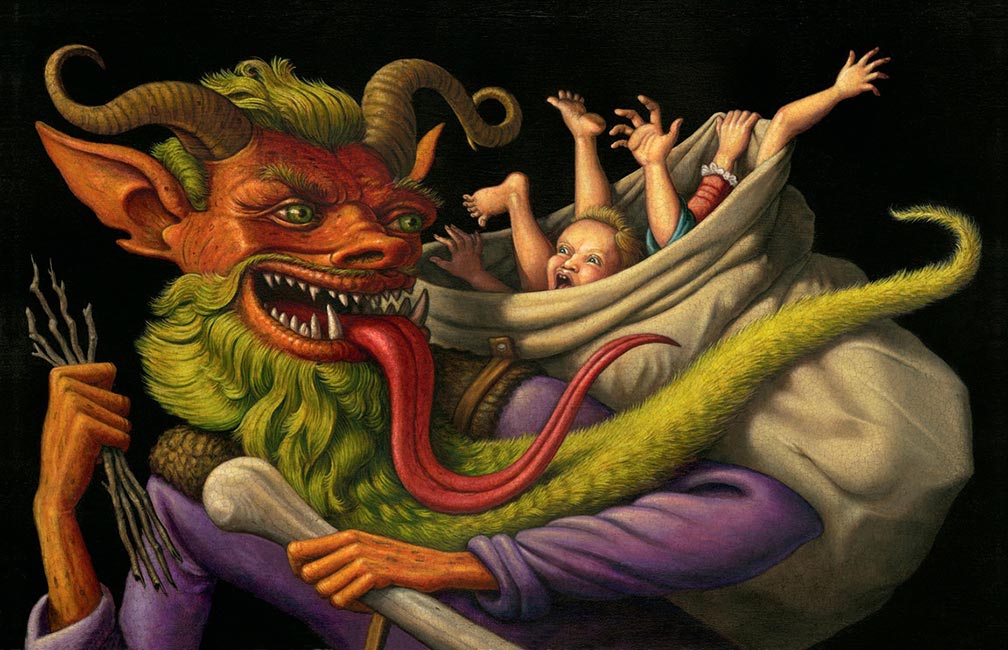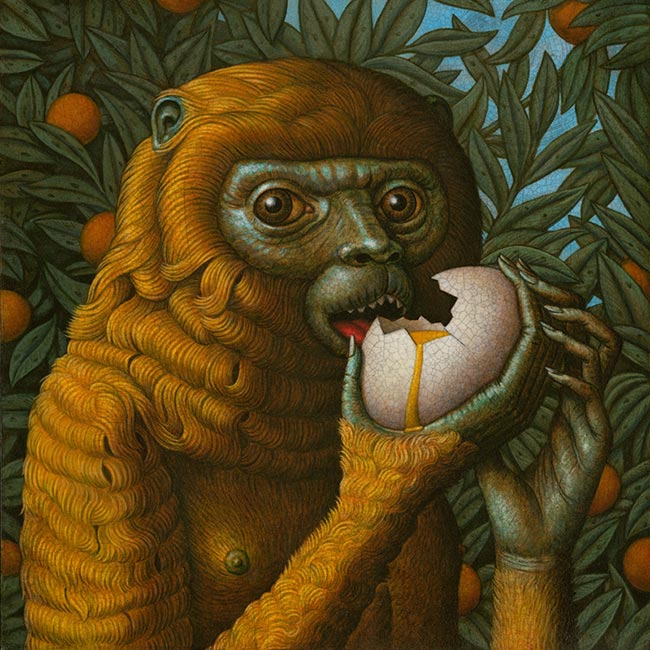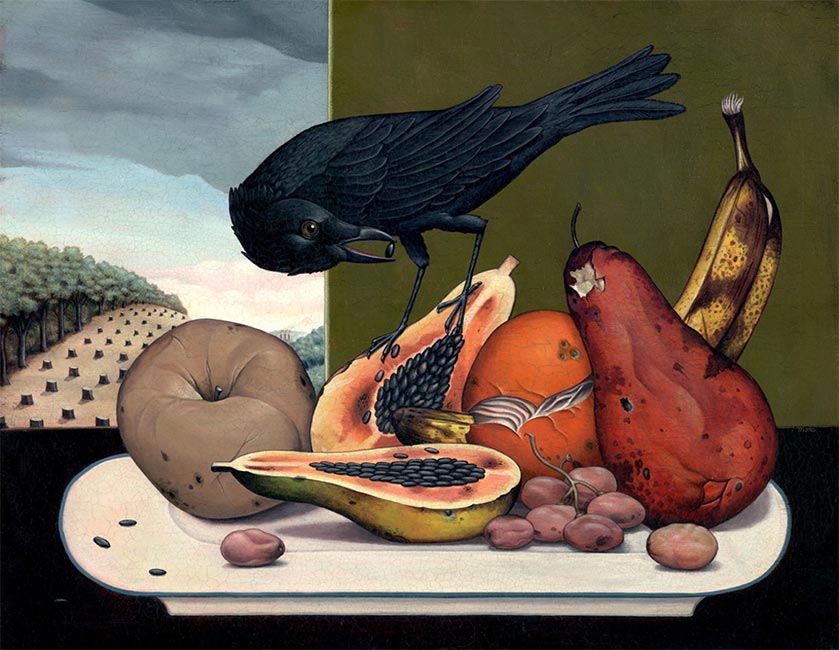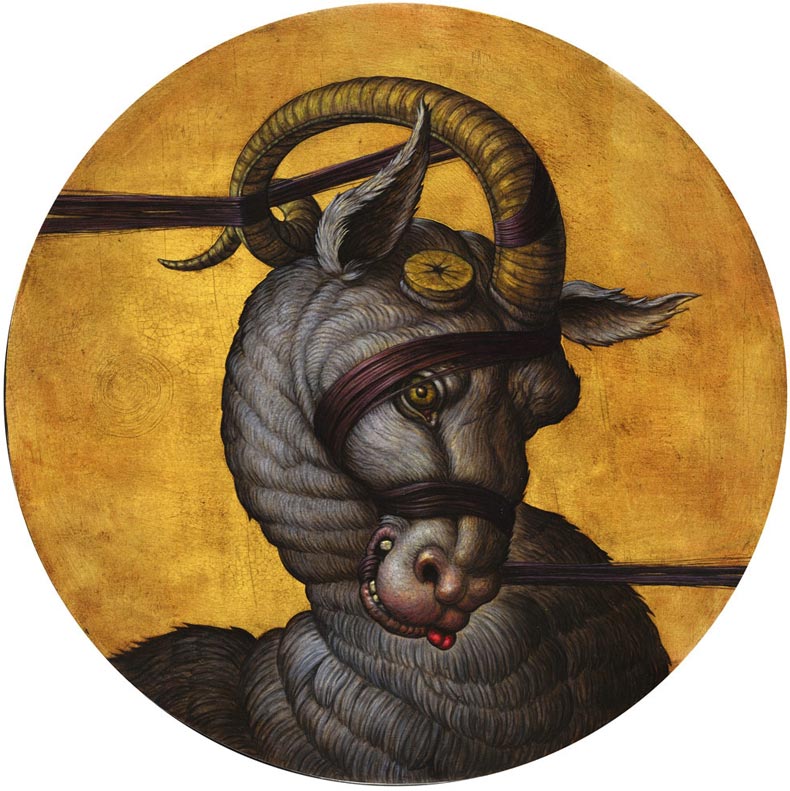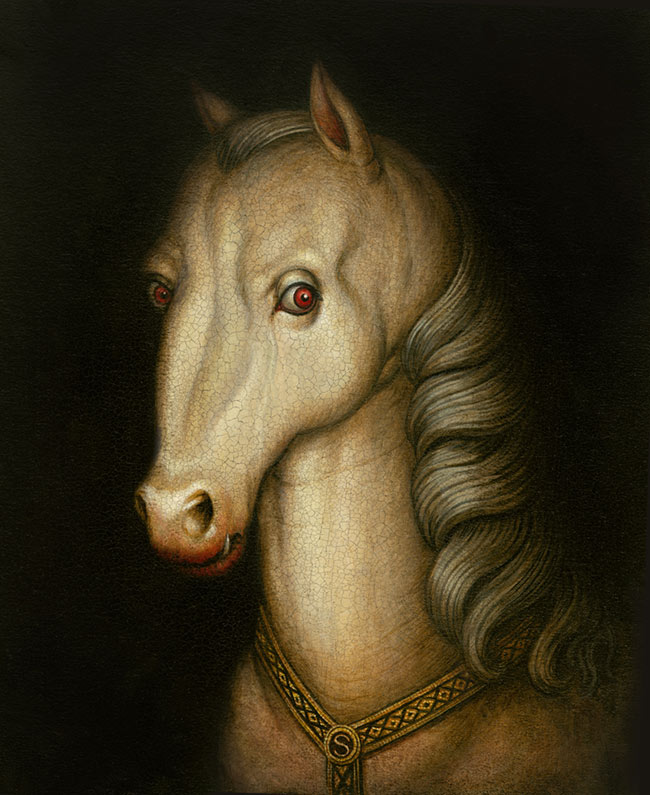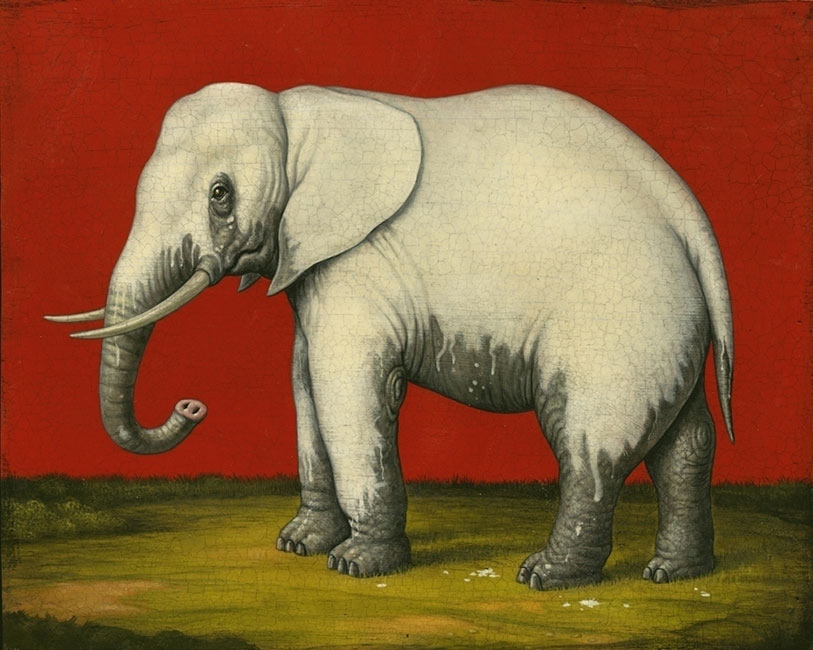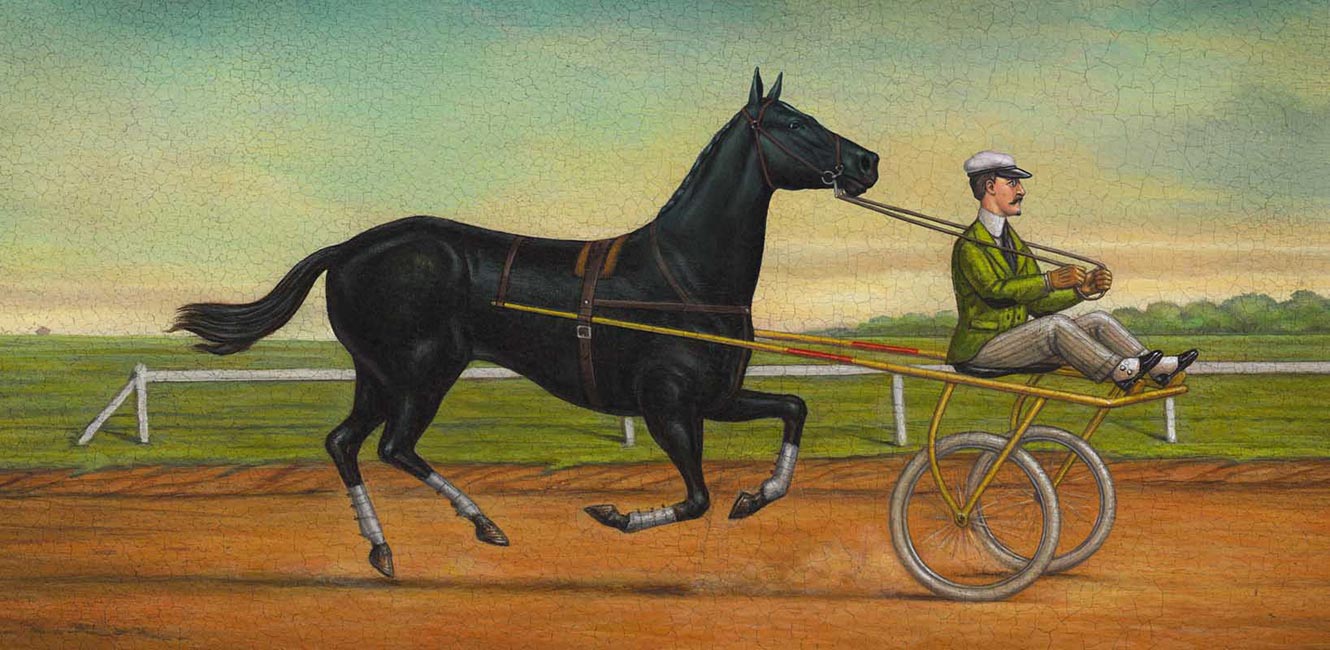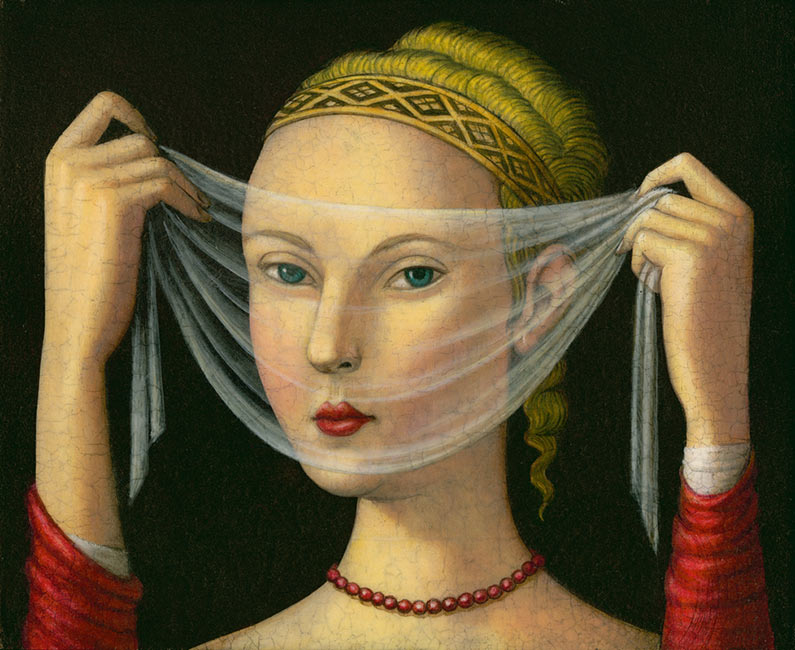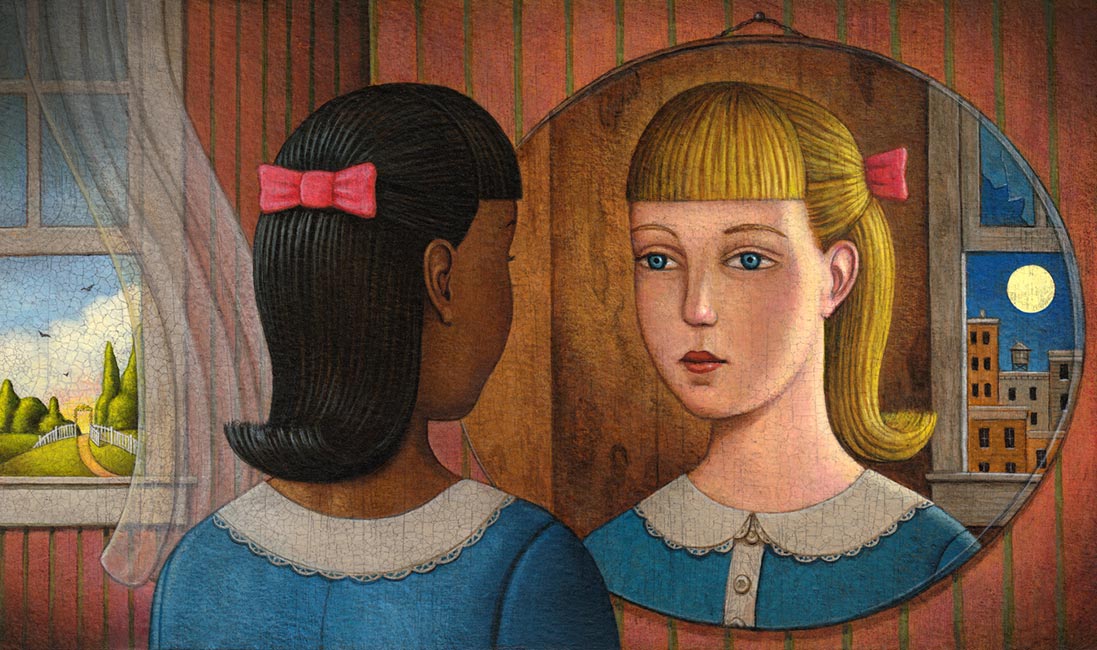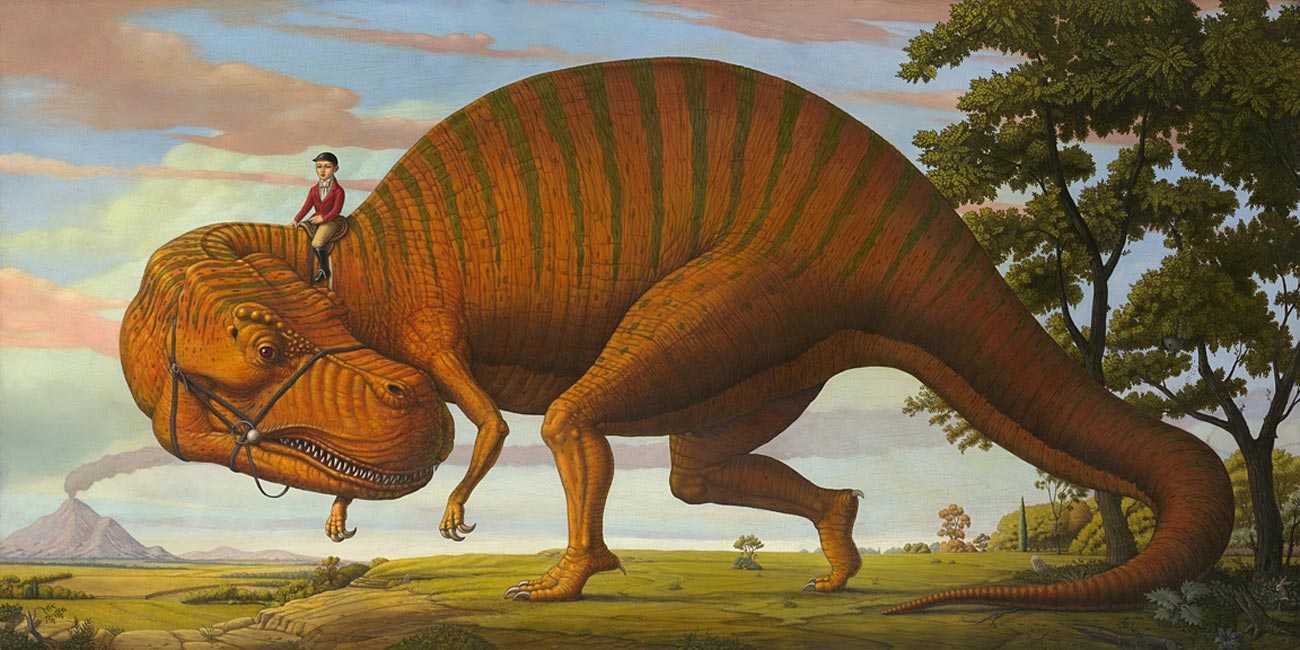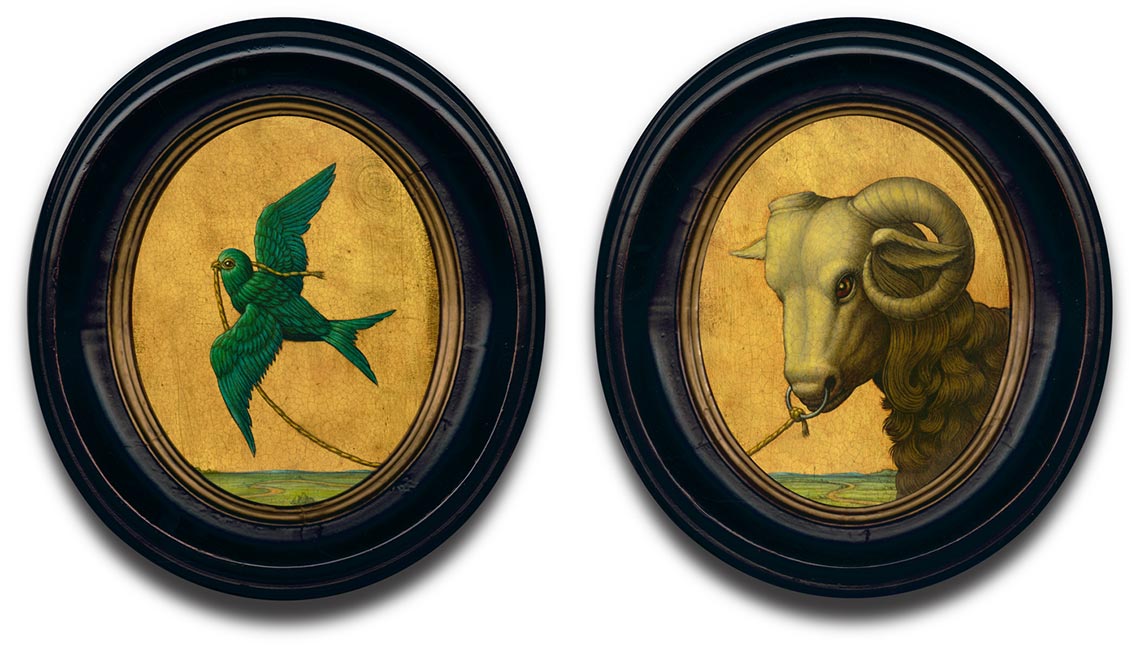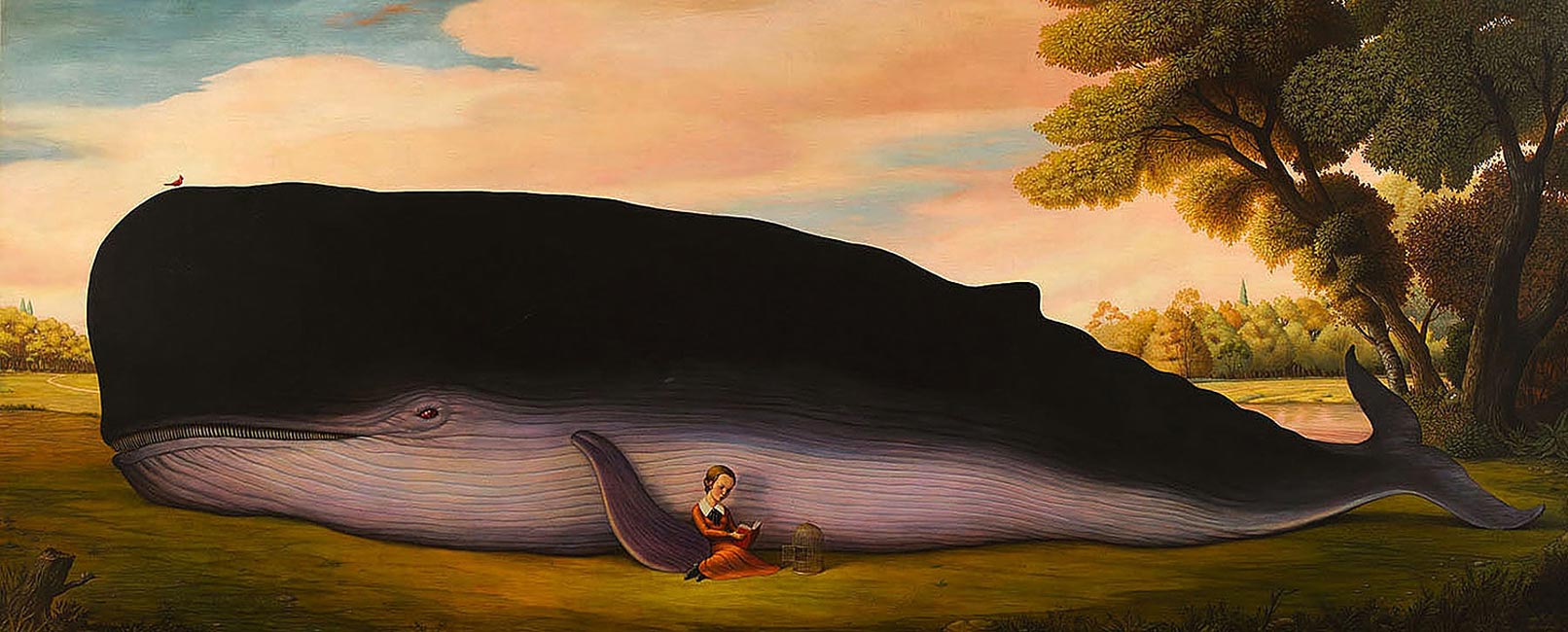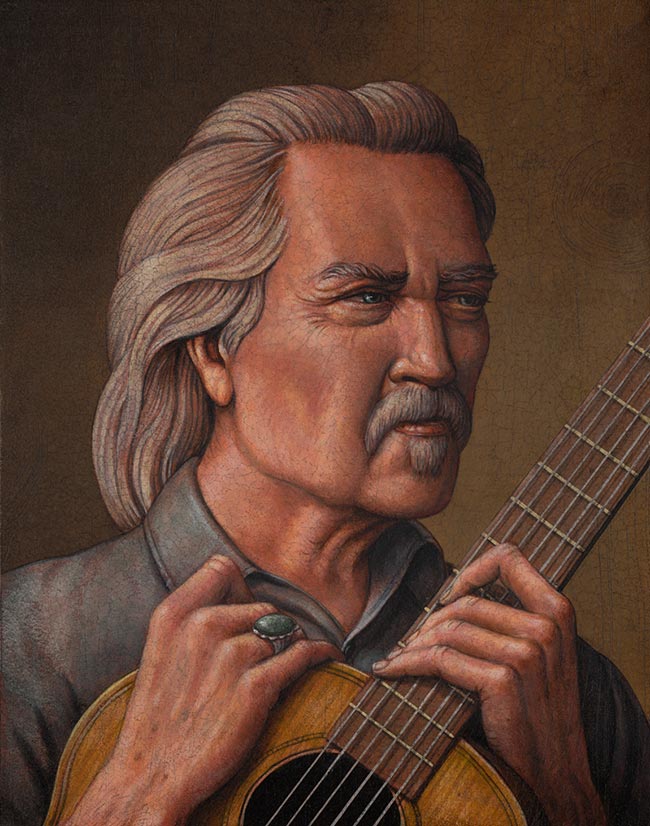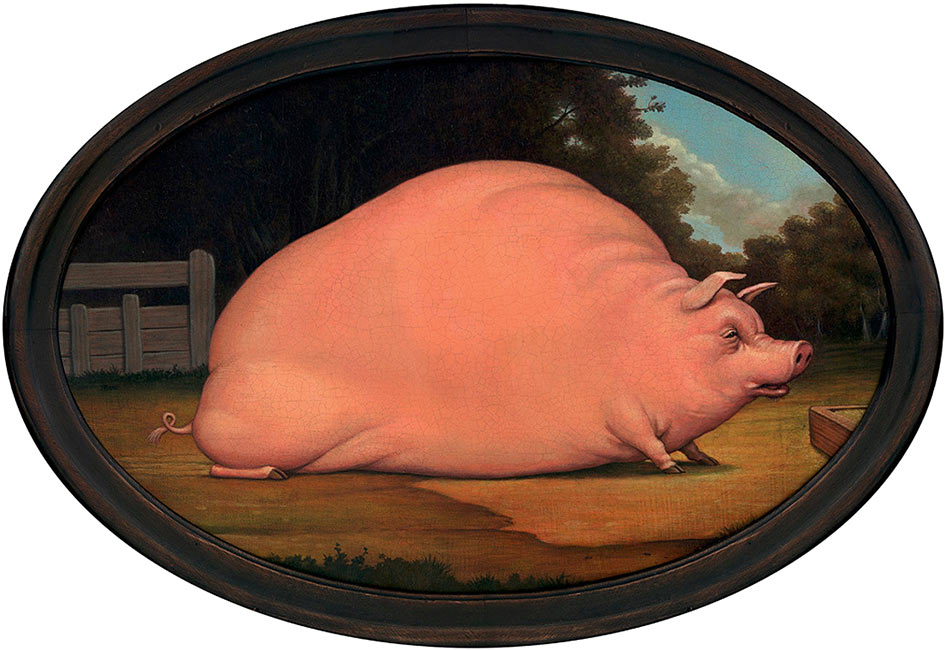On first glance, Marc Burckhardt’s paintings appear to have been handed down through generations; their aged appearance and rustic aesthetic is reminiscent of that of the great masters of the Northern Renaissance. Burckhardt’s imagery is rich with symbolism, which draws its potency from a lexicon of classic symbology, whose meaning and strength have been built up over centuries. While his technique and visual aesthetic may be rooted in tradition, the subject matter and themes Burckhardt explores are very much of the 21st century, and this is the key ingredient which lends his images much of their power. By way of the familiarity of a historic aesthetic, Burckhardt presents current events, beliefs, and questions through a wider historical lens and with a distinct timelessness; all the while encouraging us to contemplate our contemporary world with fresh perspective.
Marc Burkhardt was born in Germany in 1962 and was raised in Waco, Texas. He attended Baylor University where he received an undergraduate degree in art history and printmaking, before proceeding to The Art Center College of Design in Pasadena, where he graduated with a BFA in 1989. Marc currently splits his time between commercial illustration and fine art. His commercial client list is hugely impressive, he has won numerous awards, among which include, a Grammy for Best Limited Edition Box Set Packaging for ‘The Legend: Johnny Cash‘, and his paintings are part of prestigious collections around the world.
WOW x WOW recently had the great honour of challenging Marc with a few searching questions about his creative endeavours, interests and intentions. Read his insightful and thought provoking responses in the interview below.
Hi Marc! Thanks ever so much for freeing up some of your valuable time to have this wee chat with us, we really appreciate it. To start us off, if you would please introduce yourself, touching on anything you feel relevant to story of Marc Burckhardt the artist?
I was born in Europe, to an American mother and German father, and raised in Waco, Texas. To the extent that an outsider’s perspective can foster artistic development, I came by mine legitimately! I spent my summers as a kid overseas, and it was there that I had my first real encounters with art: The Flemish masters, and the rich, dark history of the Northern Renaissance. Texas in turn gave me the love of Mexican folk art (very similar to Bavarian folk painting, incidentally) as well as vernacular art like sideshow and carnival banners, roadside billboards, and hand-lettering in groceries, honkytonks, and dancehalls. I majored in Art History & Printmaking in college, and applied my love of painting, drawing, and Western visual symbolism to my further education at Art Center College of Design in California, moving to NYC right after graduation to start my career freelancing. I’ve had the good fortune since then to work with clients like TIME, Rolling Stone, SONY Records, Porsche, and Pentagram, and also exhibit in galleries and shows throughout the US and Europe.
We’re interested to hear about where you’re currently living and what you like about the area?
I’m based in Austin, Texas, but still spend a great deal of time each year traveling overseas as well. The contrast between Texas, where I grew up and still consider home, and central Europe, which is so rich in art history, continues to make an inspiring mix. The museums and architecture in Europe never cease to amaze… and margaritas, Tex-Mex, and winters in the 70s ain’t bad!
How do you approach the creative process? Talk us through how you construct an image. Do have a concrete idea of what it will look like before you get started? What type of reference do you use?
For me, ideas come from the most mysterious of places, so my process tends to be nonlinear. I digest the material—or my daydreams, depending on the context of the piece—through small rough thumbnails, and once I’ve found a direction that resonates I work a tighter sketch up, usually monochromatically. If it’s for a gallery exhibition, my next step is to consider scale, then move directly to painting. For commissions, I typically send the sketch, or sometimes a few, for review and approval.
I like to work without reference whenever I can, but obviously for portraits or specific objects/places I search for as many and as varied images as I can, looking not for a single vantage point or source but rather a 3-dimensional sense of a face or location. I can then develop my own, hopefully unique perspective on the subject. I will admit an addiction to art books, which inspire the mood, composition, and themes I focus on most.
Being both an illustrator and a fine artist, does one discipline influence the other? Is there a certain type of synergy that exists or do you think of them as two separate entities?
I feel a strong bond between my personal and my commissioned work, one that’s grown over the years. Each influences the other, with gallery work tapping in to my personal vocabulary and steering the direction of the commissions I receive, and the commissions in turn keeping me connected to the world outside my head and to the storytelling tradition. I couldn’t imagine having one without the other, and I believe the best work comes through the dialogue between them.
As a former instructor at both the School of Visual Arts in NYC and Texas State University, in what ways did your interaction with your students affect your thoughts about your own work? Did anything arise from your classes that enhanced the time you spent in your own studio?
Teaching forces you to put into words processes that are normally intuitive, or at least not verbal in nature. Trying to communicate how your own creative method works is very difficult, but it’s an essential skill when working in collaborative environments like commissioned work, so the techniques I practice in class with students also make me better at verbal interaction with collectors and clients. It’s also been my experience that watching that process in other artists, particularly at a stage in their development where changes happen at an exponential level, is a great education for the educator, too, and exciting to see happen. Nothing quite as gratifying as watching the lights go on in a student.
Your work is contemporary in it’s subject matter, yet upon close inspection, the surface of your paintings has an aged quality, as if the varnish or the paint surface has cracked with the passing of time. Would you be willing to talk about this aspect of your art? Obviously we don’t want you to divulge all your secrets, but anything you’d be willing to share about your inspirations, motivations, techniques, etc., would be most interesting.
My technique tends to be something students in particular focus on, as they’re at a stage in their own development where technical mastery is critical and craft often leads concept. I like to keep the spotlight on why I present a solution the way I do, not how, so I try to steer younger artists to explore their reactions to historical images—the themes and symbolic language—and how they respond to them from a contemporary perspective. By adopting the formal compositions and traditional craft of Western historical painting, using methods that age the surface, and even incorporating frames in to print-targeted commissions, I can draw viewers in to a ‘genuine’ experience that seems familiar on the surface but hopefully leads to surprises. Like most storytellers, I believe what you want to communicate should determine how you want to say it.
Having studied Art History you clearly have a strong relationship with humanity’s endeavours in the creative sphere. Do you feel that it is important for artists to have a good understanding of what has gone before them? Could you please try and identify your personal favourite period or movement from the past then talk about some of your favourite artists from the era and what you like most about them and their work?
I think we all stand on the shoulders of giants, and that history shows us where we’ve been as humans and as a culture. How could an artist not want to know their visual ancestors? Communication today is more visual than ever before, and developing the ability to express your ideas to others requires understanding their language as well. After all, enticing someone in to your world often requires an invitation.
Among my biggest influences are Northern Renaissance and Dutch genre painters; it’s in this period that art begins to be about the material and the secular—the roots of modern commercial painting, in many ways. Its also where the symbolic language of Western art began to be less tied to literal translation and instead developed its own, more lyrical tradition. Bosch, Brueghel, Rembrandt, and Rubens all pushed the boundaries of symbolism and subject matter. This Northern tradition also has another draw for me: the figures are surprisingly individual. When I look at a Cranach or Van Eyck, I often feel like I just saw those characters on the street. That connection breathes life into work that’s hundreds of years old.
If you could own one piece of art from the world’s collections, what would it be and why?
An almost impossible question to answer! But if I were forced to choose (or given the chance to grab something), I might very well pick Thomas Gainsborough’s St. James Park, at the Frick. It’s a painting I visit almost every time I’m in NYC, and it truly has it all: dramatic landscape, biting social commentary, theatrical lighting, and a sense of movement that’s uncanny. Of course I could always settle for the Lorrain or the Ingres in the next room….
As you are so well versed in the history of art and its symbolism, how do you approach the symbolism within your own work? Do you like to utilise the strength and power of symbols of the past and recontextualise them within the contemporary themes of your work, or do you come at it from another angle?
I have a library full of books on visual symbolism, and believe much of the meaning behind images has carried into our contemporary unconscious through repetition. Still, many viewers often have a hard time getting past the surface beauty of historical images and connecting with the more ethereal themes buried in a still life or landscape. I try to use classical symbols and ‘reinvent’ them through context, using the unexpected to shake the viewer out of their slumber.
As we move through life we continue to grow and change. In what ways have you seen your work evolve since you started down the path of being a professional artist?
I think finding your voice as an artist is incredibly difficult; for most of us, it requires years of work, training, untraining, and ultimately listening to your instincts—itself a skill that takes practice. Putting an emphasis on personal work pushed me to explore themes and ways of communicating that were uniquely my own. Through fable and myth, and using symbols, characters, and settings that come from my imagination, I’ve found a visual language I hope draws the viewer into my space, rather than simply illustrating the written word. Art in the context of another artform—whether it’s music or literature—should compliment and enrich the experience, not simply give a visual diagram. Finding the voice and perspective to bring that to the table takes time, practice, and some life experience.
What is the most memorable reaction anyone has ever had to your art?
I’ve created many works that use religious iconography to explore contemporary ideas, and once created a piece for a well-known publication on the Mars Explorer mission, to accompany an article exploring how the discovery of life on another planet might impact world religions. Though I used humor to convey the idea, a few of their more conservative readers weren’t amused!
I also had the extraordinary experience of meeting Johnny Cash many years ago, who commissioned me to paint a portrait of his late wife, June Carter, in their home outside Nashville. Mr Cash told me how much the portrait I did of her meant to him—that it was his favorite. As both a huge fan and someone who has experienced the loss of loved ones, that meant a great deal to me.
Bottom line: You never know how a piece you’ve done will resonate once it leaves your hands.
Your passion for traveling is well known. Would you be willing to recall one of the most exciting experiences that you’ve had on your travels?
I’m a bit of a museum junkie, so what counts for exciting to me may not raise the blood pressure with most folks. Standing in front of Mantegna’s Suffering Redeemer in Copenhagen took my breath away. Still, the best part of travel is seeing how people in other parts of the world live and getting off the beaten track. I recently met the Japanese version of Gilligan near Naoshima and almost got lost at sea—anything can happen when you travel!
In order to get a better understanding of the personality of an artist, it can help to get a peek behind the curtain. Would you be willing to share a story from your own life, one which you feel has contributed to shaping the person and therefore the artist you are today?
I think it’s difficult to pinpoint a moment or particular experience that shapes a person’s perspective; it’s the sum of a lifetime that makes you who you are at any given moment, and that, too, evolves as you push ahead. I’ve had the great fortune of good friends, loving family, and tremendous luck in life which has softened the inevitable hard knocks life can deal. I also believe a willingness to work hard and play well with others always makes the path smoother.
What’s next for Marc Burckhardt?
Good question! More traveling and adventure I hope, and keeping my eyes open to new influences and ideas. This career offers incredible surprises, so the best predictor of the future is in being prepared for the opportunities when they arrive. And a bit of luck never hurts!

